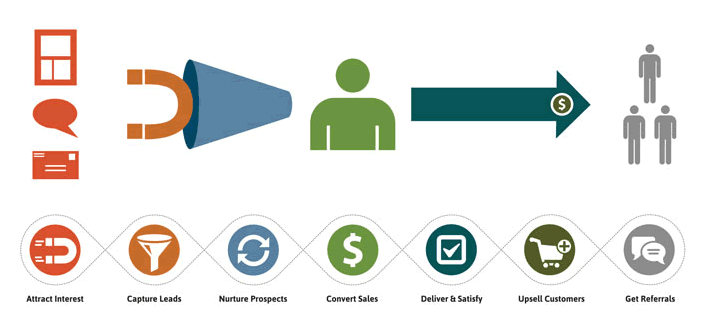Data driven marketing is not just a way for businesses to refine and target their marketing efforts more effectively, but it has become a REAL expectation from customers as well.
“Arguably, the most important evolution in the history of marketing is the ability to understand what data you have, what data you can get, how to organize and, ultimately, how to activate the data” – Mark Flaharty, SundaySky
In its analysis of 2015, the analytical data platform Teradata (Download PDF: Global Data Driven Marketing Survey Report) revealed that “customers have grown accustomed to marketers’ knowledge of their preferences and anticipation of their needs.”
 Therefore, the following appears to be true: (Please RT – click on bird!)
Therefore, the following appears to be true: (Please RT – click on bird!)
“Customer feedback implies that data driven marketing is not seen as intrusive but rather, is well-received” – Jon Rognerud (@jonrognerud)
Businesses are recognizing the need for data driven marketing and many are seeing how it aligns with their business goals and expectations.
They understand the importance of focusing on consumers and better predicting their actions, habits and preferences.
The biggest drivers of increased data marketing include:
- Maximized efficiency of marketing investments
- Improved knowledge of customers and prospects
- Improved alignment with consumer preferences and needs
- A growing availability of audience data, providing better data capabilities
- A need to become more customer oriented
However, knowing why data driven marketing is important is different than knowing where your efforts need to focused.
While one of your primary goals may be to improve the efficiency of advertising campaigns, you need to know what type of data is going to help you accomplish this as well.
Data gathering efforts are typically focused toward:
- Data related to offers, messages and content
- Product development
- Customer experience
- Audience analytics and measurement
- Predictive analysis
By capturing data in these categories, businesses can use the information for better consumer engagement across numerous channels, online and offline.
Some of the most popular channels for data driven marketing include websites, mobile apps, call centers, social media, in-store, direct mail and catalogs.
Don’t take my word for it though… let the data tell you this.
Data provides a logical approach to outlining your marketing strategies. Through testing and analyzing various channels, you can find which ones work well for your business.
As an example, while mobile apps can be effective in many industries, they aren’t suitable for all and there’s pre-existing data to prove this. You can use this data for determining the practicality of investing in these areas.
Data driven marketing is beginning to be recognized for the opportunities it creates as well.
Businesses that allow data to guide their marketing priorities are able to personalize the customer experience with:
- custom messages,
- acquiring analytical skills that can be used to leverage insights,
- get higher customer acquisitions,
- boost conversion and retention rates,
- and improve efficiency by significant margins.
It is only a matter of time before the right data crosses your path. There is no better way to acquire data than to test the waters, make mistakes and learn from them.
That’s not to say that you will have issues. In the Teradata report, there are obstacles preventing marketing from becoming more data driven:

Here are 6 immutable laws of data driven marketing to guide you along the way:
1. Follow the data – internally and externally
While data driven marketing is mostly about the consumer, don’t forget that there is a lot to be learned from your employees and the obstacles they face as well.
Sometimes you have to look inward to engage customers more effectively.
Your employees will be the most familiar with important business procedures such as order management and client retention practices.
There is often data here that can be collected and analyzed to find valuable insights.
Address things that may be holding you back as well as things that are working well for the business. You can learn from both positive and negative data.
2. Don’t let data stunt creativity
Data driven marketing is about letting the numbers influence decision making but it shouldn’t interfere with creativity and exploration.

Don’t let the metrics steer your business into a black and white decision making process.
There is such a thing as being too data-driven, where you lose the personal touch and human element that your business once had.
Let the data inspire and guide you rather than catering every action or task toward its findings.
3. Use technology for analytical insights and marketing automation
Whether you are marketing through a website, app, television or any other channel, technology is your assistant to data driven marketing and automation.
Use the tools and resources available to your for gaining analytical insights.
For your website, there is Google Analytics, which helps you better understand your traffic, where it comes from and how users behave once arriving at your website.
For virtually every marketing channel, there are analytical tools that gather data for you automatically, taking the hassle out of the process and making your job easier.
Similarly, most marketing channels have solutions that can help you automate some of the process.
For instance, for websites you can look into email marketing automation through MailChimp.
These tools create entirely new categories of data, allowing you to explore and come up with ideas.
MailChimp tells you which email subjects perform the best, your open rate and much more. The technology you use creates new data pathways that can inspire you.
4. Continue to measure and experiment
Having the right data on hand won’t help unless you integrate your findings and continue to measure and test the results.
Be adventurous and find what works for you and what doesn’t. Let the data guide you to make changes to your marketing campaigns.
With the right reporting setup, you will be able to view in real-time how your campaigns are responding to the adjustments.
Data driven marketing is sometimes a repetitive process of tinkering and learning but with the right tools, you will be able to deliver better content to your audience.
5. Redeploy and scale
When you’ve made your adjustments and got the formula just right, you’re ready to redeploy and start investing more money.
By continuing to measure and test, you will optimize your campaigns for maximum ROI and slowly raise the bar for quality score and effectiveness.
Scaling allows you to make use of your efforts and get more revenue out of the hard work and changes you’ve made by following the data.
6. Stay true to the user experience
It can be tempting to allow data to model every decision you make.

When you do this, you often sacrifice the user experience for changes that the data suggests should be profitable but when implemented, does not prove to be as promising.
Remember to always stay true to the user experience and you shouldn’t have this problem.
Before making adjustments, imagine yourself as a consumer and how the change would impact your thoughts, opinions and overall user experience.
 Sometimes data can compel you to make changes that sacrifice important attributes that were working for your marketing campaigns.
Sometimes data can compel you to make changes that sacrifice important attributes that were working for your marketing campaigns.
By staying true to the user experience you put value and engagement ahead of everything else and create the best possible outcome for the user.
All marketing executives in today’s markets want to serve their customers better. They want answers. You can find it in the data.
Resources, tools and further data-driven marketing research:
- Drawbridge (enable marketers to sync cross device)
- Liveramp (onboarding and unification of customer data across disparate systems)
- Top data-driven marketing blogs (bookmark at least 3)
- Data driven marketing topics on LinkedIn (people and resources)
- Cuebiq
- MediaMath
- Connexity
- ShareThis
- V12 Group
- Webbula
- Taboola





